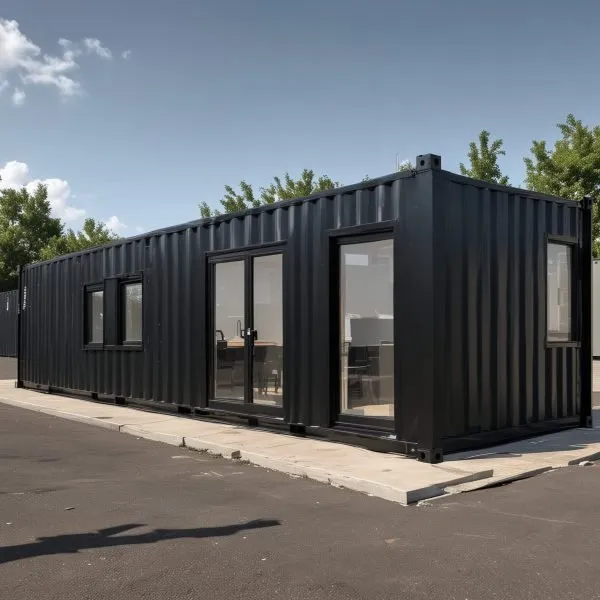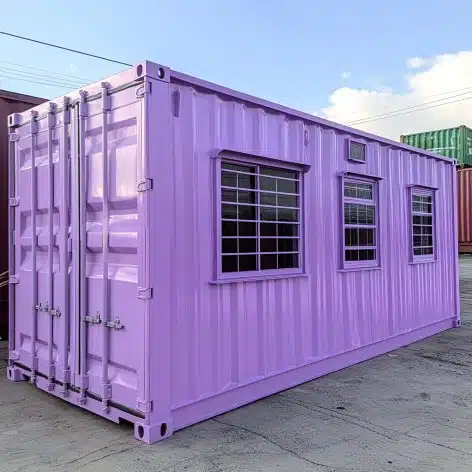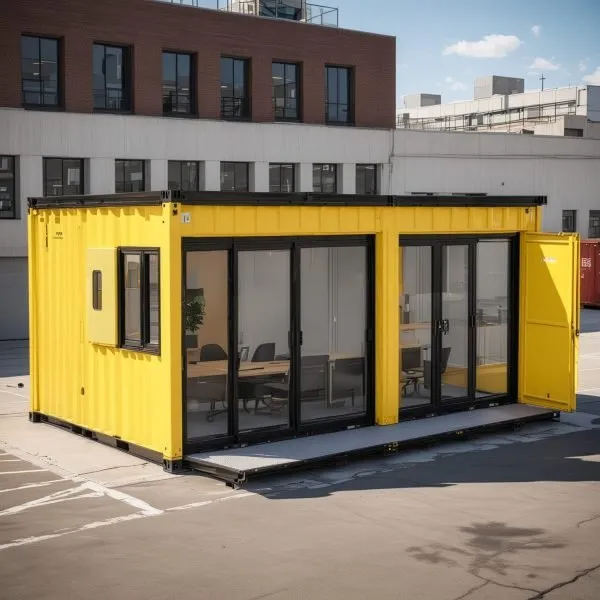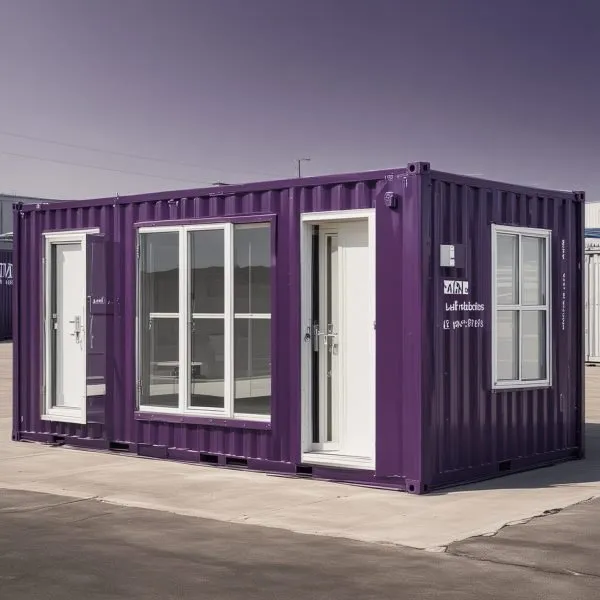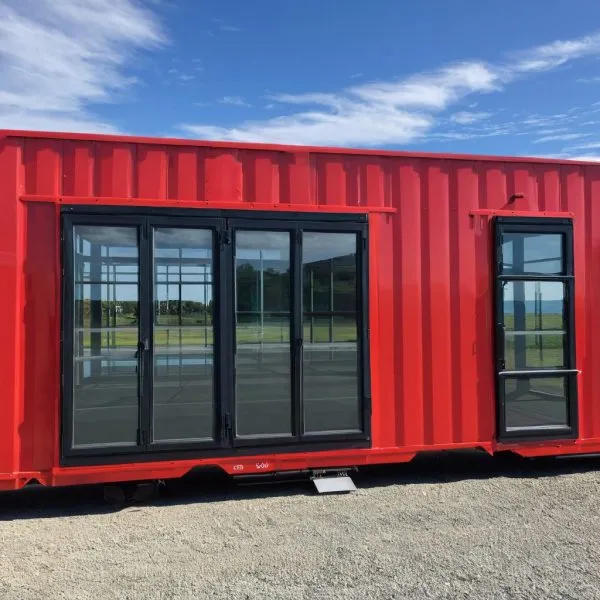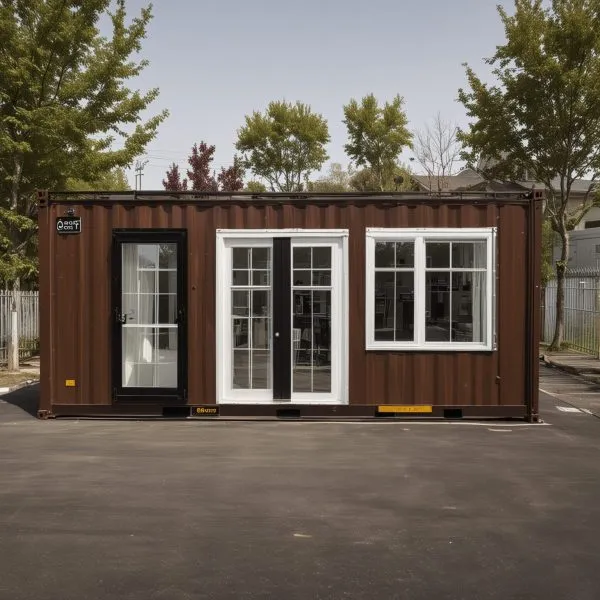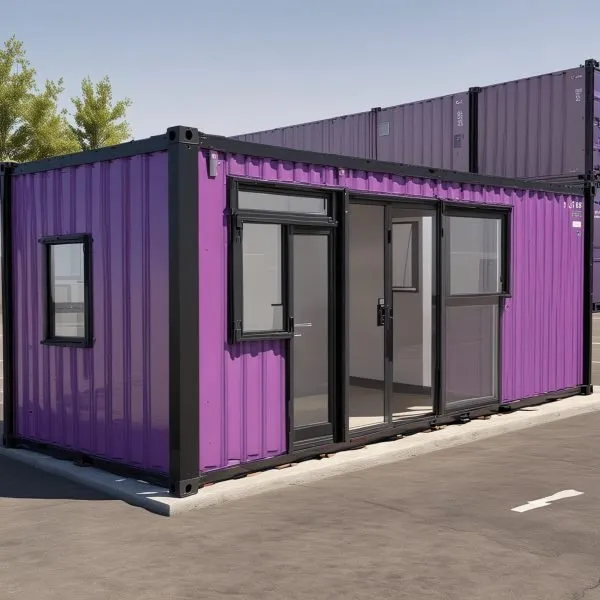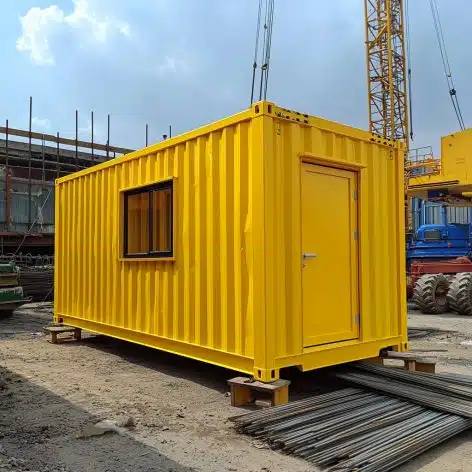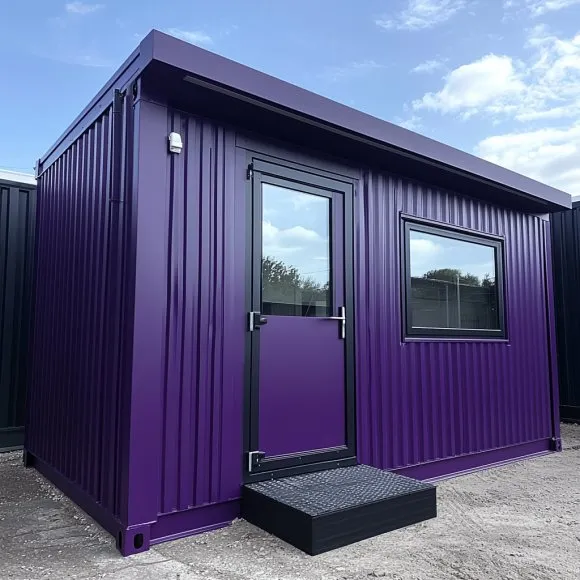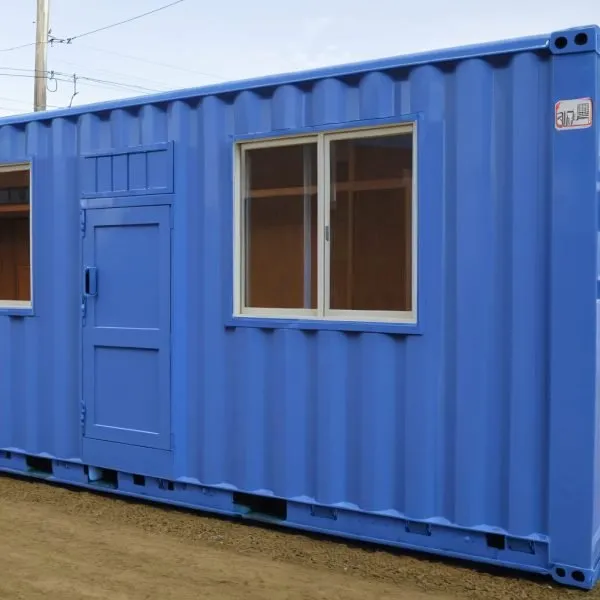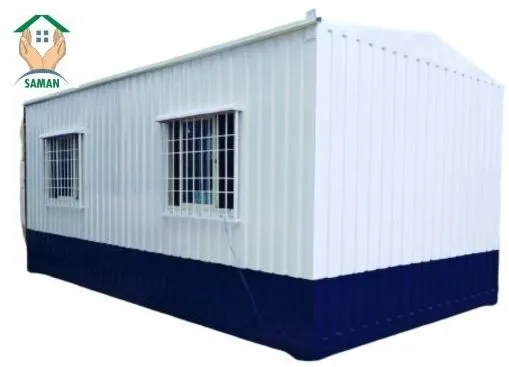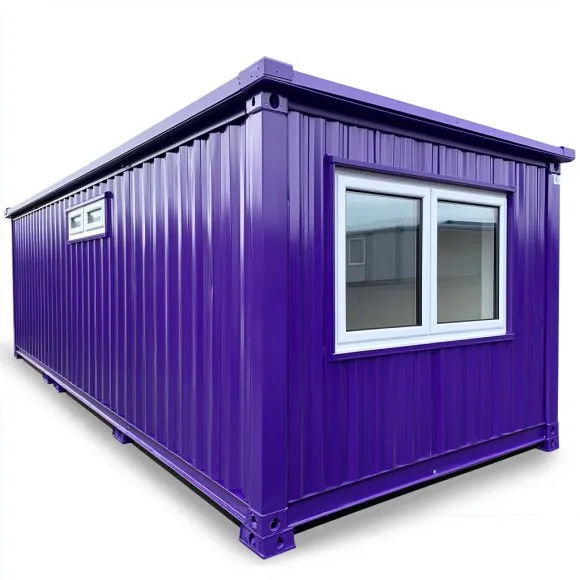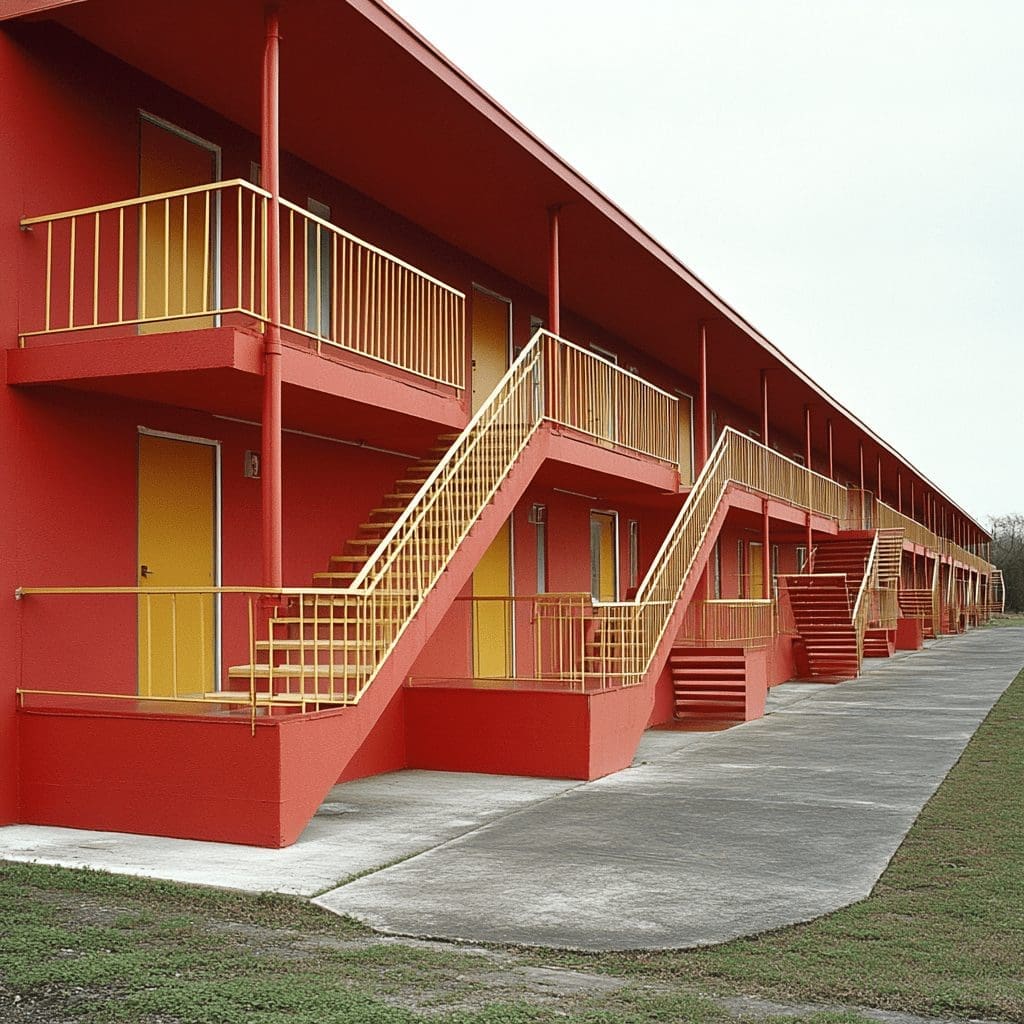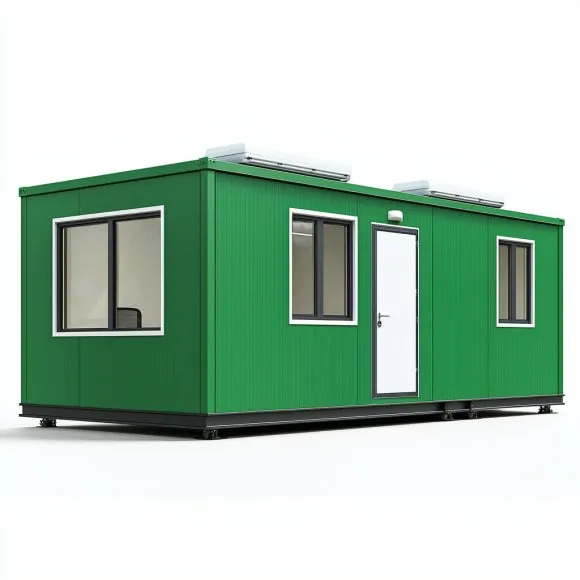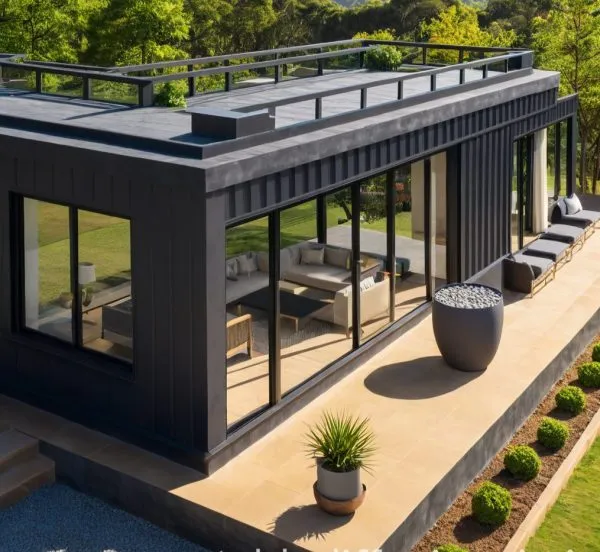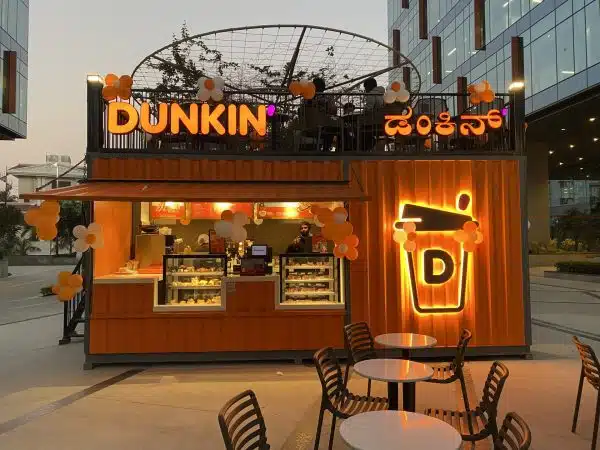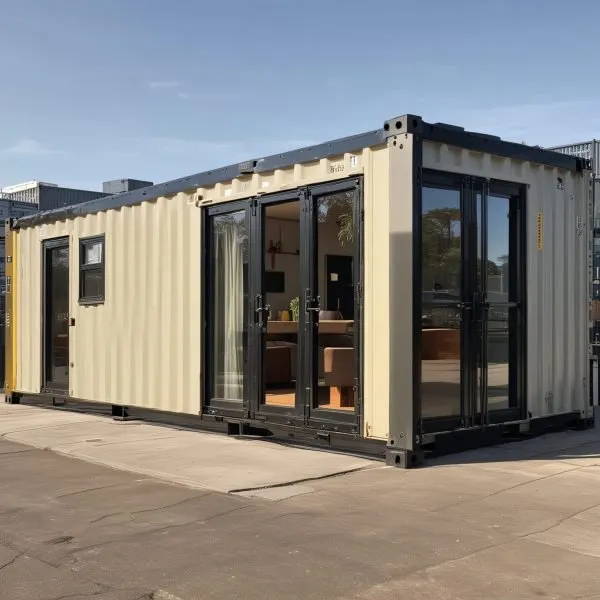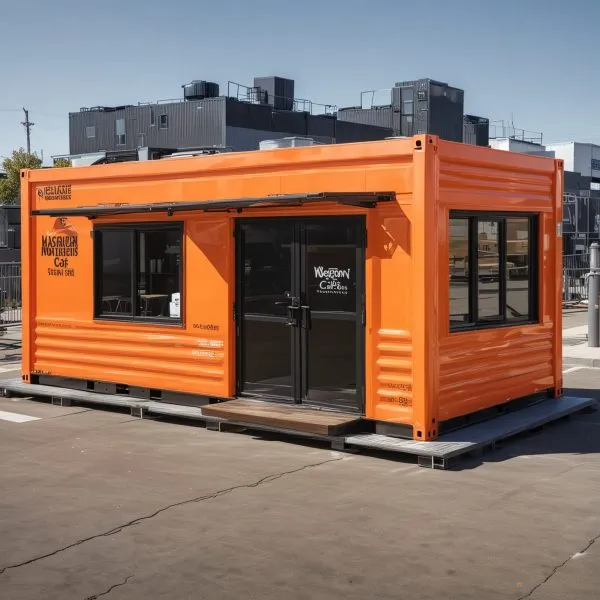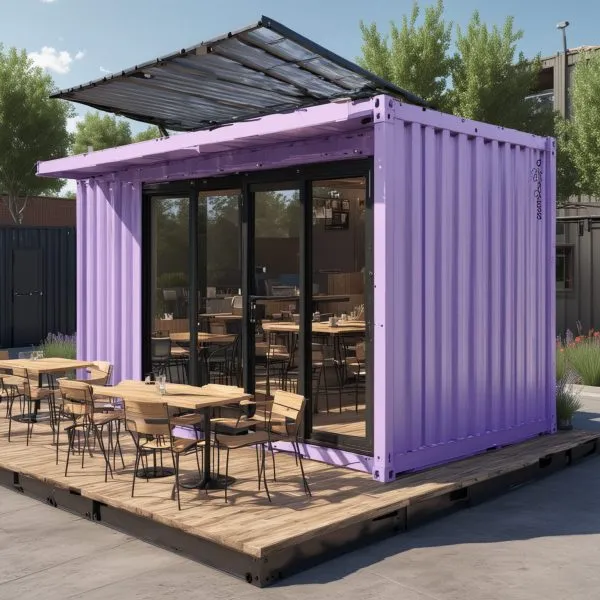Modern Cabin House: A New Take on Nature-Inspired Living

Introduction to Modern Cabin House
The modern cabin house represents a refreshing blend of simplicity, functionality, and elegance, integrating contemporary design principles with natural surroundings. Unlike the classic rustic cabins that rely on traditional wood and logs, modern cabins adopt a streamlined architectural style, often using eco-friendly materials and innovative technologies to create a stylish, energy-efficient space.
As a primary residence, vacation home, or rental property, modern cabin houses appeal to those who value minimalism, comfort, and a strong connection to nature. With features like open floor plans, large windows, and sustainable building practices, modern cabins offer an immersive experience in nature without compromising on modern conveniences. For more on the broader range of modern cabin designs, visit our Modern Cabins pillar page.
Key Characteristics of a Modern Cabin House

Modern cabin houses are defined by distinctive characteristics that prioritize light, space, and sustainability.
Open-Concept Living Spaces
A signature feature of modern cabin houses is the open-concept layout, which removes traditional walls and divides spaces with subtle boundaries. By uniting the kitchen, dining, and living areas, these cabins foster a communal environment that’s perfect for family gatherings or entertaining guests. The absence of walls allows natural light to flow freely, enhancing the sense of space.
This layout also maximizes flexibility, allowing homeowners to rearrange or adapt spaces based on their lifestyle needs. For instance, movable partitions or modular furniture can create separate workspaces when needed, making modern cabin houses adaptable for various uses.
Large Windows and Natural Light
Modern cabin houses use large, often floor-to-ceiling windows to frame breathtaking views of their surroundings. Whether nestled in a forest, overlooking a lake, or perched on a mountainside, these windows draw in natural light, making interiors feel bright and spacious while minimizing reliance on artificial lighting. This natural integration creates a seamless transition between indoor and outdoor spaces, enhancing the cabin’s connection to nature.
Many modern cabin homes use double- or triple-glazed windows for energy efficiency, which helps regulate temperature throughout the year while reducing energy costs. The added insulation also contributes to soundproofing, making the cabin a quiet sanctuary.
Minimalist Interior and Exterior Design
Minimalism is key to the aesthetic of modern cabin houses. Interiors and exteriors are designed with clean lines, neutral color palettes, and a focus on functionality. Rather than over-decorating, modern cabins highlight quality craftsmanship and durable materials. From the polished wood floors to metal accents, every element is chosen for its aesthetic and practical value.
The simplicity extends to the cabin’s exterior as well. Sleek facades, flat or gently sloping roofs, and monochrome finishes create a sophisticated look that contrasts with the rustic, rugged charm of traditional cabins.
Sustainable and Eco-Friendly Materials
Sustainability plays a central role in the design of modern cabin houses. Builders often opt for eco-friendly materials like reclaimed wood, bamboo, and recycled metal, which reduce environmental impact. Additionally, many modern cabins incorporate renewable energy sources, such as solar panels or geothermal heating, to minimize energy use.
Green insulation and energy-efficient windows contribute to the cabin’s overall eco-friendliness by reducing the need for artificial heating or cooling. Some modern cabin homes also include rainwater harvesting systems or composting toilets, providing a full off-grid experience for those seeking a self-sustaining lifestyle.
Design Elements in a Modern Cabin House
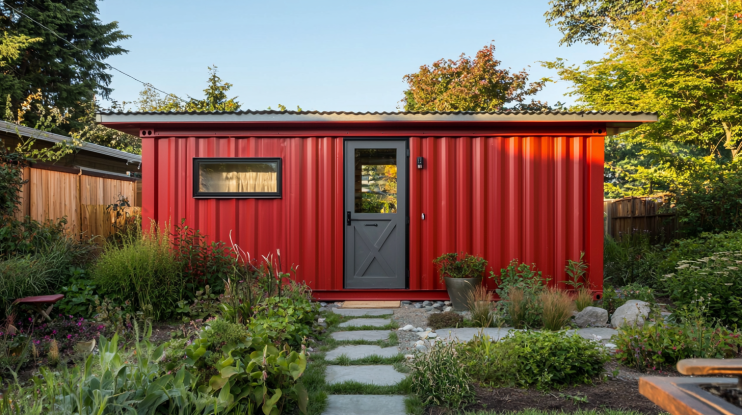
A well-designed modern cabin house harmonizes natural beauty with modern architecture.
Architecture and Structure
Modern cabin houses feature a range of architectural styles, from asymmetrical structures to geometric forms that create visual interest. Many have low-pitched or flat roofs, adding a contemporary edge and making the cabin blend smoothly with its environment. Open spaces, tall ceilings, and expansive windows create a sense of freedom and openness that invites the outdoors in.
Modular and prefabricated cabins are also popular choices, allowing for efficient construction while maintaining quality. These methods save time, reduce waste, and offer flexibility in terms of design and layout.
Modern cabin design draws inspiration from a range of architectural influences, each adding a distinct touch to the cabin experience. For those interested in sleek lines, minimal decor, and bold accents, exploring contemporary style can be particularly inspiring. Discover more about contemporary cabin aesthetics and see how this style merges sophistication with modern comfort.
Natural Materials and Finishes
Natural materials are fundamental to modern cabin homes. Wood, stone, and metal dominate the interior finishes, adding warmth and texture. Wood paneling, in particular, brings a rustic charm while complementing the modern aesthetic. Exposed beams, natural stone fireplaces, and metal fixtures create a balance between traditional and contemporary styles.
In some designs, concrete and steel are used for their durability and minimalist appeal, giving the cabin a rugged, industrial look that contrasts beautifully with the softness of the wood and the natural setting.
Interior Design Trends
Modern cabin interiors emphasize functional decor, where each piece has a purpose. Neutral color palettes, such as whites, grays, and earth tones, create a calming atmosphere, and natural textures like wool, leather, and linen add depth to the minimalist style. Popular decor items include modular sofas, sleek wooden tables, and simple yet stylish light fixtures.
Open shelving is a common feature, adding storage without cluttering the space. These shelves often hold books, plants, or curated decor items that reflect the owner’s personal taste while staying true to the minimalist theme.
The diversity within modern cabin styles offers something for every taste, whether you lean towards minimalist aesthetics or more rustic, industrial influences. From streamlined layouts to natural materials and eco-conscious designs, each style has unique elements that enhance the cabin experience. Browse our range of modern cabin styles to find inspiration and explore options that match your vision.
Outdoor-Indoor Connection
Modern cabin houses strive to eliminate the divide between indoor and outdoor spaces. Many designs incorporate sliding glass doors that open onto expansive decks or patios, creating an uninterrupted flow between the cabin’s interior and its surroundings. Some even have covered outdoor areas that serve as additional living spaces, perfect for relaxing or dining while immersed in nature.
Landscaping around the cabin is typically designed to complement the natural environment, using native plants and materials like stone pathways or wooden decks. This careful design allows the cabin to blend seamlessly with the landscape, providing a cohesive look.
Types of Modern Cabin Houses
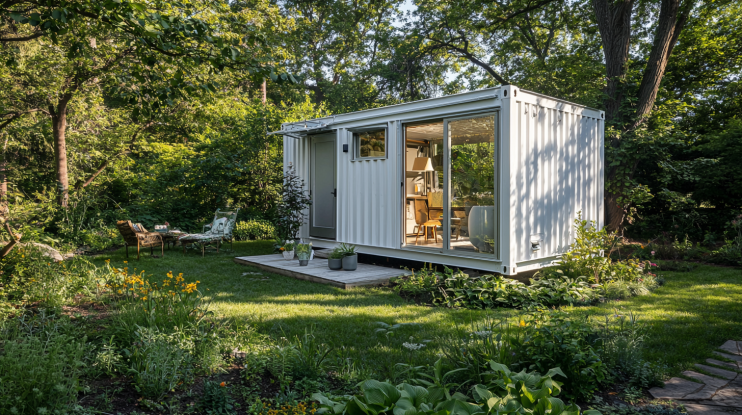
There are various types of modern cabin houses, each tailored to different needs and aesthetics.
Minimalist Modern Cabin House
Minimalist cabins emphasize simplicity and functionality. These designs focus on essential living areas with minimal decor, creating a calming space that feels open and airy. Furniture and fixtures are chosen for their utility, often doubling as storage or multi-functional pieces to maximize space. This style is ideal for those who appreciate an uncluttered, low-maintenance lifestyle.
Luxury Modern Cabin House
For those seeking both luxury and nature, luxury modern cabins offer high-end amenities like spa-style bathrooms, gourmet kitchens, and expansive master suites. These cabins may feature custom finishes, upscale furniture, and luxury materials like marble and premium hardwood. In addition, smart home technology is often integrated, allowing control of lighting, temperature, and security at the touch of a button.
Small and Compact Modern Cabin House
Small modern cabins are perfect for those who want an efficient, affordable space that doesn’t compromise on style. These cabins utilize compact layouts, with multi-functional furniture and smart storage solutions to maximize living space. Small modern cabins are popular as vacation homes or as minimalist primary residences for those embracing a simpler lifestyle.
For those interested in creating a cabin that feels spacious yet efficient, there’s a world of compact, adaptable options. Small, versatile cabins are an excellent solution for those who value streamlined living without sacrificing comfort. Explore our collection of small, adaptable cabin ideas to see how modern designs can maximize every inch of space while maintaining a luxurious feel.
Eco-Friendly Modern Cabin House
Eco-friendly modern cabins are designed for sustainable living. Often built with reclaimed materials, these cabins incorporate renewable energy sources like solar panels and wind turbines. Water-saving fixtures, energy-efficient appliances, and eco-friendly insulation are standard, making these cabins ideal for those committed to reducing their carbon footprint.
Benefits of Choosing a Modern Cabin House
A modern cabin house offers numerous benefits that enhance the quality of life and provide a unique connection to nature.
Connection with Nature
Modern cabin houses are designed to offer a tranquil retreat from the urban environment, allowing residents to fully immerse themselves in natural beauty. Large windows, open layouts, and outdoor spaces create an environment that encourages relaxation, mental clarity, and a sense of peace.
Sustainability and Eco-Conscious Living
Eco-conscious living is a core value for modern cabin homeowners. These cabins minimize resource use and promote sustainability, making them an excellent choice for environmentally aware individuals. Green building materials, energy-saving features, and efficient heating and cooling systems support a sustainable lifestyle while reducing the cabin’s environmental footprint.
Enhanced Aesthetic Appeal
Modern cabins are architecturally stunning, with designs that reflect elegance, simplicity, and innovation. They’re stylish yet timeless, appealing to a range of tastes and preferences. The sleek, minimalist look makes them desirable properties, with high resale value in the housing market.
Flexibility as a Primary or Vacation Home
A modern cabin house is versatile, serving as a primary residence, weekend retreat, or rental property. This flexibility makes it a valuable investment for homeowners who appreciate nature but want a stylish, comfortable space to return to.
Building Materials and Construction Techniques
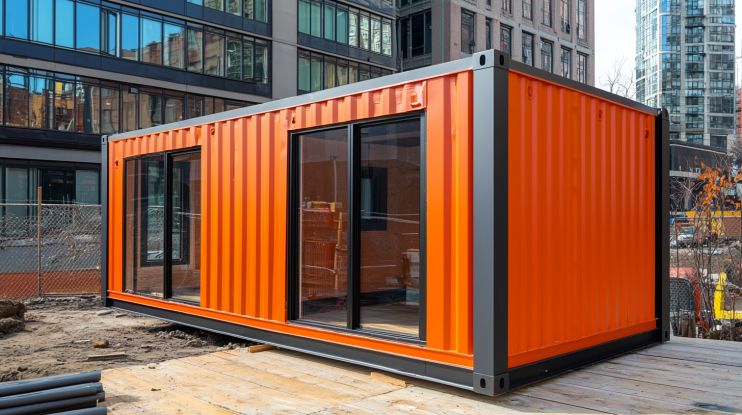
Building a modern cabin house requires choosing durable, sustainable materials and efficient construction techniques.
Common Building Materials
Wood, glass, metal, and stone are commonly used in modern cabins for their durability and aesthetic appeal. Reclaimed wood and bamboo are popular choices, offering a sustainable option that also adds warmth to the design. Steel and glass are used for a modern, industrial look, creating a balance between rugged and refined elements.
Energy Efficiency and Insulation
Modern cabins prioritize energy efficiency, using high-quality insulation, energy-efficient windows, and sustainable heating and cooling systems. This not only reduces the cabin’s carbon footprint but also decreases energy costs over time. Passive solar heating, where large windows capture and store heat from sunlight, is also common in modern cabin designs.
Construction Techniques
Modular and prefabricated construction techniques are increasingly popular in modern cabin building. These methods reduce construction time and material waste while allowing for a high degree of customization. Prefabricated elements are manufactured off-site and assembled at the cabin’s location, offering precision and efficiency in the building process.
Eco-Friendly Practices in Construction
Modern cabin houses often incorporate green building practices, such as using local materials and reducing waste. Rainwater harvesting, composting systems, and green roofs are also popular features, enabling a self-sustaining approach to modern cabin living. Green roofs, in particular, provide insulation, improve air quality, and contribute to biodiversity, while rainwater harvesting systems capture and recycle water for use in irrigation or gray water systems. These eco-friendly practices make modern cabins highly efficient and eco-conscious homes, ideal for those looking to minimize their environmental footprint without sacrificing comfort or style.
Popular Locations for Modern Cabin Houses
The location of a modern cabin house plays a crucial role in shaping its overall experience, aesthetics, and functionality. Here are some of the most sought-after settings for modern cabins, each offering unique advantages and challenges:
Mountain Retreats
Mountainous regions are ideal for modern cabin houses, providing dramatic landscapes, fresh air, and a secluded atmosphere. The rugged terrain and elevation often afford stunning panoramic views, making mountain retreats a popular choice for those seeking tranquility and inspiration. Modern cabins in mountainous settings are typically designed with reinforced structures and advanced insulation to handle the cold climate and high winds.
Lakeside and Riverside Cabins
Waterfront settings, whether by a lake or river, offer a serene environment where residents can enjoy a variety of outdoor activities, from kayaking and fishing to swimming and picnicking. These cabins often feature large decks or docks to take full advantage of the scenic views. To combat the effects of moisture, lakeside modern cabins use moisture-resistant materials, ensuring longevity and durability.
Forest and Wooded Areas
A forested environment provides privacy, a lush natural setting, and a calming ambiance. Modern cabins built in wooded areas often feature designs that blend seamlessly with the trees, incorporating natural materials that reflect the surrounding landscape. With natural shade and greenery, forest cabins stay cool in the summer, while fireplaces or wood stoves create warmth during colder months.
Urban and Suburban Edges
For those who want to stay close to urban conveniences, modern cabins on the edges of cities or in suburban areas offer a balanced lifestyle. These locations combine the appeal of nature-focused living with easy access to city amenities. Urban-edge modern cabins are often designed with minimal environmental impact and focus on smart technology to enhance convenience and security, making them a popular choice for modern city dwellers.
Interior Layout and Decor Ideas for Modern Cabin Houses

The interior layout and decor of a modern cabin house create a cohesive and inviting atmosphere that enhances the minimalist aesthetic.
Open and Functional Layouts
Modern cabins are known for their open layouts, which make compact spaces feel larger and more welcoming. An open plan connects the kitchen, dining, and living areas, fostering interaction and a sense of togetherness. Movable partitions or screens allow flexibility, enabling spaces to be easily divided when privacy is needed.
Furniture and Decor
In modern cabins, furniture serves both practical and aesthetic purposes. Multi-functional furniture pieces, like storage beds and foldable tables, maximize space and keep interiors uncluttered. Decor items are minimal, with an emphasis on quality and functionality. Materials like wood, leather, and metal add texture, while decor elements like rugs, woven baskets, and ceramic accents bring warmth and personality.
Popular Color Palettes
The color schemes in modern cabin houses typically feature neutral tones such as whites, grays, and earth colors. These hues create a calming, cohesive look that feels natural and soothing. Accents of green, blue, or muted orange are sometimes added to bring vibrancy without overwhelming the minimalist aesthetic.
Decor Accessories and Art
Art and decor accessories in modern cabins are carefully chosen to maintain the simplicity of the space. Pieces like large nature-inspired paintings, woven rugs, and sculptural lighting fixtures add visual interest without detracting from the cabin’s clean design. Indoor plants are also popular, as they enhance air quality and bring an element of nature indoors.
Cost of Building and Maintaining a Modern Cabin House
Building a modern cabin house involves various costs, from initial construction to ongoing maintenance. Here’s an overview of what to expect:
Average Construction Costs
The cost of building a modern cabin house varies significantly based on size, materials, and location. On average, a basic modern cabin can start around $100,000, while high-end, luxury cabins can reach or exceed $300,000. Features like large windows, eco-friendly materials, and custom finishes contribute to higher costs but also add value and functionality.
Factors Affecting Cost
Several factors impact the cost of a modern cabin house, including location, climate, and material choice. For example, remote locations require additional logistics for transporting materials and labor. Additionally, eco-friendly materials and energy-efficient systems may increase upfront costs but offer long-term savings in reduced energy consumption and maintenance.
Maintenance Requirements
Regular maintenance is essential for keeping a modern cabin in top condition. Key tasks include exterior cleaning, window washing, and ensuring proper insulation. In forested or lakeside locations, additional measures like roof clearing, moisture management, and pest control are necessary. Seasonal maintenance tasks, such as preparing plumbing for winter or maintaining outdoor areas, ensure the cabin remains comfortable year-round.
Budget-Friendly Alternatives
For those on a tighter budget, choosing prefabricated or modular cabins is a cost-effective alternative to custom builds. Using recycled or reclaimed materials, simplifying the design, and opting for energy-efficient fixtures also reduce construction and operational costs. These budget-conscious strategies allow homeowners to enjoy the benefits of a modern cabin without overspending.
Future Trends in Modern Cabin House Design

As design and technology continue to evolve, modern cabins are embracing innovative trends that prioritize comfort, sustainability, and a closer connection to nature.
Smart Technology Integration
Smart technology is becoming a staple in modern cabin design, offering convenience and efficiency. Automated lighting, climate control, and security systems can be managed from smartphones, adding ease to off-grid living. Some cabins even feature smart windows that adjust transparency based on sunlight, reducing glare and enhancing privacy.
Eco-Friendly Innovations
As sustainability becomes more important, new eco-friendly technologies are being integrated into cabin designs. These include energy-efficient insulation, water-saving systems, and green roofs that improve air quality and temperature regulation. Solar energy, geothermal heating, and rainwater collection systems are also growing in popularity, allowing for a more sustainable lifestyle.
Multi-Functional Spaces
Modern cabins are increasingly designed with multi-functional spaces that can adapt to various needs. For instance, a living area may double as a workspace, or a guest room may be transformed into a gym. This trend reflects the growing preference for adaptable, versatile spaces that maximize functionality.
Focus on Wellness and Nature
Wellness-focused designs are gaining traction, emphasizing elements like natural lighting, air quality, and spaces dedicated to relaxation or fitness. Large windows, air-purifying plants, and spa-like bathrooms create an atmosphere that nurtures well-being, making the cabin a haven for rest and rejuvenation.
Conclusion
Modern cabin houses offer a perfect blend of style, sustainability, and comfort. They invite us to reconnect with nature while enjoying all the conveniences of modern living. From minimalist layouts and eco-friendly materials to smart technology and luxury amenities, these cabins cater to a variety of lifestyles and personal tastes. For those looking to create a nature-inspired sanctuary, modern cabins represent the ideal fusion of design and functionality.
Whether you’re considering a primary residence, a weekend getaway, or a profitable rental property, a modern cabin house can fulfill these needs with elegance and ease. Explore our Modern Cabins pillar page to discover more about the different styles and options available, or learn more about our design philosophy by visiting our About Us page. Modern cabin houses are more than just a living space; they are a lifestyle choice that balances luxury with nature, creating a timeless retreat for generations to come.
 Container Cafe
Container Cafe

